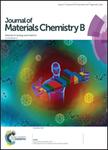版权所有:内蒙古大学图书馆 技术提供:维普资讯• 智图
内蒙古自治区呼和浩特市赛罕区大学西街235号 邮编: 010021

作者机构:Ludong Univ Collaborat Innovat Ctr Shandong Prov High Performa Sch Chem & Mat Sci Key Lab High Performance & Funct Polymer Univ Shan Yantai 264025 Peoples R China
出 版 物:《JOURNAL OF MATERIALS CHEMISTRY B》 (J. Mater. Chem. B)
年 卷 期:2025年第13卷第8期
页 面:2705-2716页
核心收录:
学科分类:08[工学] 0805[工学-材料科学与工程(可授工学、理学学位)] 080502[工学-材料学]
基 金:Project of Shandong Province Higher Educational Science and Technology Program [ZR2023YQ043, ZR2021MB124] Shandong Provincial Natural Science Foundation National Natural Science Foundation of China [2019KJA011] Project of Shandong Province Higher Educational Science [IPGS2024-059] Innovation Project for graduate students of Ludong University
摘 要:With the miniaturization, integration and intelligence of sweat electrochemical sensor technology, hydrogel flexible sensors have demonstrated immense potential in the field of real-time and non-invasive personal health monitoring. However, it remains a challenge to integrate excellent mechanical properties, self-healing properties, and electrochemical sensing capabilities into the preparation of hydrogel-based flexible sensors. The utilization of CBPG (cellulose nanocrystals (CNCs)@bovine serum albumin (BSA)@polyethyleneimine (PEI) glucose oxidase (GOD) nanomaterial) as both an enhancing phase and sensor probe within a hydrogel matrix, with poly(vinyl alcohol) (PVA) serving as the primary network constituent, has been proposed as a non-invasive technique for monitoring trace glucose levels in sweat. In this study, BSA was initially attached to CNCs through electrostatic interactions. To further boost the surface active sites of the nanomaterial (CNCs@BSA), PEI was grafted onto the nanomaterial surface. The resulting CNC@BSA@PEI nanomaterials were then used as carriers for GOD. The prepared hydrogel exhibited good self-healing properties (87.5%) and excellent breaking strength (0.8 MPa), effectively converting glucose stimulation in human sweat into electrical output. The sensor had a detection range of 1.0-100.0 mu M and a detection limit as low as 0.9 mu M. Due to its ability to specifically recognize trace glucose levels in sweat, the CBPG-PVA sensor can perform highly selective, flexible, and reliable real-time monitoring of human sweat, offering significant potential for wearable biofluid monitoring in personalized health applications.